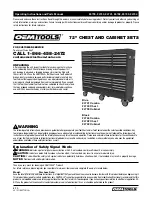
214
Promise
Technology
Pegasus32 R4/R6/R8
The data capacity RAID 10 logical drive equals the capacity of the smallest physical drive times the
number of physical drives, divided by two.
In some cases, RAID 10 offers double fault tolerance, depending on which physical drives fail.
RAID 10 arrays require an even number of physical drives and a minimum of four.
For RAID 10 characteristics using an odd number of physical drives, choose RAID 1E.
Advantages
Disadvantages
•
Implemented as a mirrored disk
array whose segments are RAID 0
disk arrays
•
High I/O rates are achieved
thanks to multiple stripe segments
•
Very high disk overhead – uses only
50% of total capacity
Recommended Applications for RAID 10:
•
Imaging applications
•
Database servers
• General fileserver
RAID 50 – Striping of Distributed Parity
RAID 50 combines both RAID 5 and RAID 0 features. Data is striped across physical drives as in
RAID 0, and it uses distributed parity as in RAID 5. RAID 50 provides data reliability, good overall
performance, and supports larger volume sizes.
The data capacity RAID 50 logical drive equals the capacity of the smallest physical drive times the
number of physical drives, minus two.
RAID 50 also provides very high reliability because data is still available even if multiple physical drives
fail (one in each axle). The greater the number of axles, the greater the number of physical drives that
can fail without the RAID 50 logical drive going offline.
A minimum of six drives are required for a RAID 50.
Содержание Pegasus32 R4
Страница 1: ...Pegasus32 R4 R6 R8 Product Manual Version 1 1 2020 Promise Technology Inc All Rights Reserved ...
Страница 9: ...ix About this guide Pegasus32 Product Manual WARNING WARNING ...
Страница 101: ...85 Managing the Pegasus32 Pegasus32 Product Manual Controller Settings ...
Страница 201: ...185 Troubleshooting Pegasus32 Product Manual View NVRAM Events ...
















































